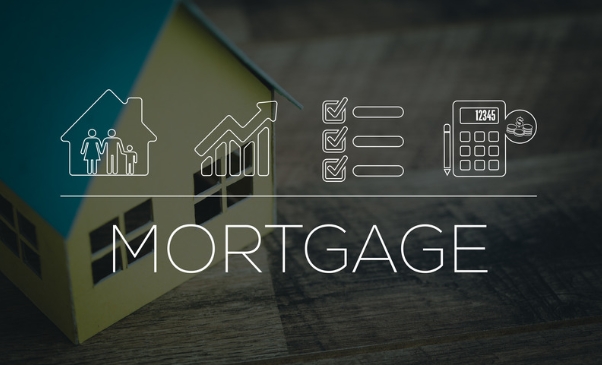When deciding whether or not to grant you a mortgage, creditors will look at your debt-to-income ratio. This portion of your earnings will go toward paying off your revolving debt. Their debt-to-income ratio largely determines borrowers' ability to pay back their mortgages. Some ways to reduce the proportion of your income going toward debt repayment include increasing your earnings, paying down debt, and refinancing your home.
Don't let the fact that getting a mortgage is challenging due to your high debt-to-income ratio dampen your spirits. You can still find the perfect house for you. Have a conversation with a lender about your predicament in order to discover a strategy to negotiate better conditions for the loan.

What Is a Debt-to-Income Ratio?
Your debt-to-income ratio is a key indicator of your borrowing capacity and should be carefully considered before filling out a mortgage application. Lenders consider your debt-to-income ratio when deciding how much of a loan they will give you and what interest rate they will apply.
You can calculate your debt-to-income ratio in two ways: the "front-end" and the "back-end" ratios. The "front-end ratio" includes your monthly housing expenses, mortgage payment, property taxes, and homeowner's insurance. That's what percentage of your monthly gross income goes toward rent or mortgage payments. To calculate your back-end ratio, add up all your monthly fixed expenses (rent or mortgage, car payment, other loan payment, credit card payment, and student loan payment).
How Does Your Debt-to-Income Ratio Affect Your Mortgage?
When deciding to give you money for a mortgage, one of the most important metrics that mortgage lenders look at is the proportion of your monthly spending to your income. Lenders can use this figure to calculate what percentage of their monthly income goes toward debt service.
Although most creditors prefer a debt-to-income ratio of 36% or lower, some might be more lenient and go as high as 42%. It is likely that the proportion of your income which goes toward your debts will be one of the factors that determines whether or not you will be approved for a mortgage loan. This is because mortgage lenders want to make sure that potential borrowers can actually afford the loan.
How to Calculate Your Debt-to-Income Ratio
You'll need to know your gross monthly income and the total amount you put toward debt each month to calculate your debt-to-income ratio. Start by tallying up your mortgage, car payment, student loan payment, and any other reoccurring monthly debt payments.
Then, divide your monthly income by the sum of your debt payments. Your debt-to-income ratio is the result.
How to Improve Your Debt-to-Income Ratio
You may improve your credit and your chances of being accepted for a mortgages by taking a few easy measures to pay off your debt. Reducing credit card debt is one of these steps to take. At first, you should make every effort to repay as much of your current debt as possible. As you pay off your debt, your income-to-debt ratio will improve.
And second, you need to do all your power to increase your financial stability. One approach is to upgrade to a higher-paying position or investigate other revenue streams. Attempting to cut down on spending is the last thing you should do. This will allow you to devote a larger portion of your earnings toward debt repayment, reducing your debt load as a percentage of your income.
Are There Other Things About the Debt-to-Income Ratio for a Mortgage which should be known?
You may wonder if the debt-to-income ratio adds additional insight into home loans. Yes, but there are a few other considerations before you go any further. First, the debt-to-income ratio is evaluated differently when applying for an FHA loan versus a conventional loan. Your debt-to-income ratio may be as high as 50% if you apply for a conventional loan. With an FHA loan, you can have up to 55% of your income go toward debt payments.
Second, your debt-to-income ratio may change depending on whether you are an employee or a business owner. Lenders will typically use a two-year salary average to determine your debt-to-income ratio if you are self-employed. Also significant are factors like your length of employment, credit rating, and down payment size.
You can't have more than 45% of your income go toward debt payments when applying for a conventional loan. There's a chance you won't get a loan or will be offered a much higher rate if your debt-to-income ratio is above this threshold. The maximum allowable debt-to-income ratio for government-insured loans such as FHA, VA, and USDA is 50%.

What Is a Good Debt-to-Income Ratio for a Mortgage?
It's natural to ask what debt-to-income ratio is ideal when applying for a mortgage. After all, the bank will consider this heavily when considering whether or not to provide credit to you. Individuals seeking a mortgage should aim for a debt-to-income ratio of no more than 28%. To put it another way, your mortgage payment and other monthly debts shouldn't take up more than 28 per cent of your take-home earnings each month.
Lenders consider your debt-to-income ratio and other financial factors before choosing whether or not to grant you a mortgage. Also significant are factors like your length of work, credit rating, and down payment size.
Conclusion
If you want to buy a new home but are concerned about your debt-to-income ratio, you should research the topic before applying for a mortgage. Mortgages with a lower debt-to-income ratio may be available to those who want to buy a home but have a substantial debt to their income. However, you should anticipate a higher interest rate and may be required to pay for private mortgage insurance.
You may not qualify for a loan due to your high debt-to-income ratio; in this case, a mortgage that factors this into the equation might be the best option. Before deciding whether this mortgage is perfect for you, shopping and comparing rates and costs is important.